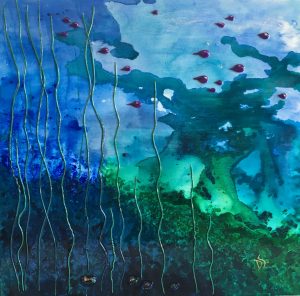Creating a Series of Paintings and Its Advantages
Category : Arts
 A series of painting might seem strange to some. It brings varied thoughts to both artists and spectators. The negative (or positive), if your focus is to sell pieces, is that if a large group does not like the subject, all may be dismissed. But likewise, if the subject is popular, then you are offering many options of that popular subject.
A series of painting might seem strange to some. It brings varied thoughts to both artists and spectators. The negative (or positive), if your focus is to sell pieces, is that if a large group does not like the subject, all may be dismissed. But likewise, if the subject is popular, then you are offering many options of that popular subject.
Painting in series
A painting in a series means a creation that is unified, consistent and logical. It is essentially one of the easiest ways to make your audience understand your works effortlessly. A series of paintings will have your audience get a grip on where you are going and what you stand for. It demonstrates consistency and shows the audience (often professionals, galleries etc) of what our style is. You will be identified and recognised by your style. Having a random number of pieces, which have no relationship, can often give others the impression and perception that you’re still ‘finding yourself’ and experimenting and working out what works.
Some artists especially beginners regard series of paintings as something boring because it is repetitive. They have not gotten the idea that this manner of working in distinct determined directions can actually become a ground for exploration of particular ideas, compositions, concepts, themes, issues and topics in a progressively meaningful and deeper way. It is like looking into something thoroughly and not merely giving it a glance. Hey, I’ve got to admit, at times I thoroughly enjoy doing something different, just for ‘the fun of it’ but ultimately I revert back to my ‘series’.
A single work of painting does not have a beginning, middle, and end; has no plot, context, and direction. It can only be assessed as a one-off, therefore, we only have to figure out on our own what its unsatisfying purpose might be. On the other hand, a series of paintings is like a novel or play. It provides a full context that will guide its audience to where the painting came from, what its inspiration was, why it exists and where it is going. It will give the audience an experience of a journey through which a masterpiece has evolved and not only presenting a beautiful image. The variations allow for different taste within the range.
Advantages of Working in a Series of Paintings
Working in a series has many advantages. The first one is style consistency. Big series paintings allow the artist to paint on several pieces at the same time. In this case, the paintings will look consistent in style even if they will show variations. For more uniformity, working on similar subjects and using the same colour mixes in all the paintings in the series looks promising. If the paintings are all in the same size, medium, and subject, they can be easy to prepare for exhibitions and would look astounding in the galleries.
There is less pressure when working with a series of paintings. Since you will not only focus on a single painting, there will be less pressure on the result. If it gets to a time when you are stuck at one point and need more time on it, you can switch to another painting from the series and not waste any more time dwelling on the other one. I find in my medium (mixed) that because I have to wait for paint to dry, and I might be in the ‘swing of it’, it allows me to work on a few pieces at once, keeping momentum and productivity.
Switching to another painting when you need a break works well. You know the expression, ‘a change is as good as a holiday’. I do admit personally, I don’t like to work on more than two pieces at once; I like to focus and finish a piece entirely before moving onto another. I only really run two because of the drying factor. Creating a series of paintings will give you an opportunity to explore a technique, a subject or even profundity of colour combinations. It will also take you lesser time to finish set of paintings if you do them in series than have them painted linearly.
A series of paintings essentially is more appealing. As it is said, more canvases add more interest. Multiple paintings can make a fairly ordinary subject transform into a whole new dimension as you may well see many variations of a single subject.
How to create a series of paintings
There is so much in creating a series of paintings that every aspiring artist should try doing it right. The first thing to do when working or creating in series is to decide on the subject matter. There should be a theme in which your works will revolve. You should be able to quantify, define, and outline your purpose so that you will get the focus and direction you will need to finish it.
It is also important to plan the sizes and shapes of the paintings. I recommend consistency in this case; especially if you are wanting to show, enter a competition or submit to a gallery. It works well to create somewhat of a roadmap of the pieces you intend to have in the series. Along the creative journey that may change a little, but have a plan in place that you mostly adhere to. While spontaneity is also good, it is much better that you work within a concept so that you get to be working together in the end.
In addition, decide on the composition and pay special attention to patterns and spatial relationships. Then, plan on the palette combination. If you have chosen the colours, it is also significant to decide if your works will be a high-key painting on lighter or mid-range values or will it be low-key with darker values.
Finally, framing is also an essential step as it is still part of the painting. When everything is done and finished, evaluate the series as a whole. They should work together and remember that a real artist should be willing to eliminate something from the series for the betterment of the whole.
Read To Frame or Not To Frame.
